Front Squat VS. Back Squat
WHICH BUILDS MORE MUSCLE & STRENGTH?
Hey guys! In this week’s episode of the VERSUS SERIES we are going to be comparing the FRONT SQUAT to the BACK SQUAT! Which is better for building muscle? Which builds more strength? And, which has a lesser risk of an injury?
If you missed the last episode where I compared the Barbell Bench Press VS. Dumbbell Bench Press, you can check it out HERE!
But before we begin, let’s talk about why we squat and learn a bit more about THE CORE. The core refers to the group of muscles that are used to stabilize the thorax and the pelvis during dynamic movements such as the front or back squat. These muscles include the pelvic floor muscles, transversus abdominis, multifidus, internal and external obliques, rectus abdominis, erector spinae, and the diaphragm.
Now, in general, squatting builds stronger muscles that can lead to an increase in speed and power which can be applied to general lifting purposes or sports. However, when evaluating the risks and benefits of each exercise you first must take into consideration the reason WHY someone is squatting, THEIR strengths, THEIR weaknesses and THEIR goals. Many studies have shown that both back and front squats recruit many major muscle groups such as the upper back, abdominals, lumbar spine, glutes, thigh adductors, quadriceps, hamstrings, and calves. But the emphasis on these muscles shifts from one lift to the other. So in order to see which exercise is best for you, let’s compare them starting with the barbell back squat!
Barbell Back Squat
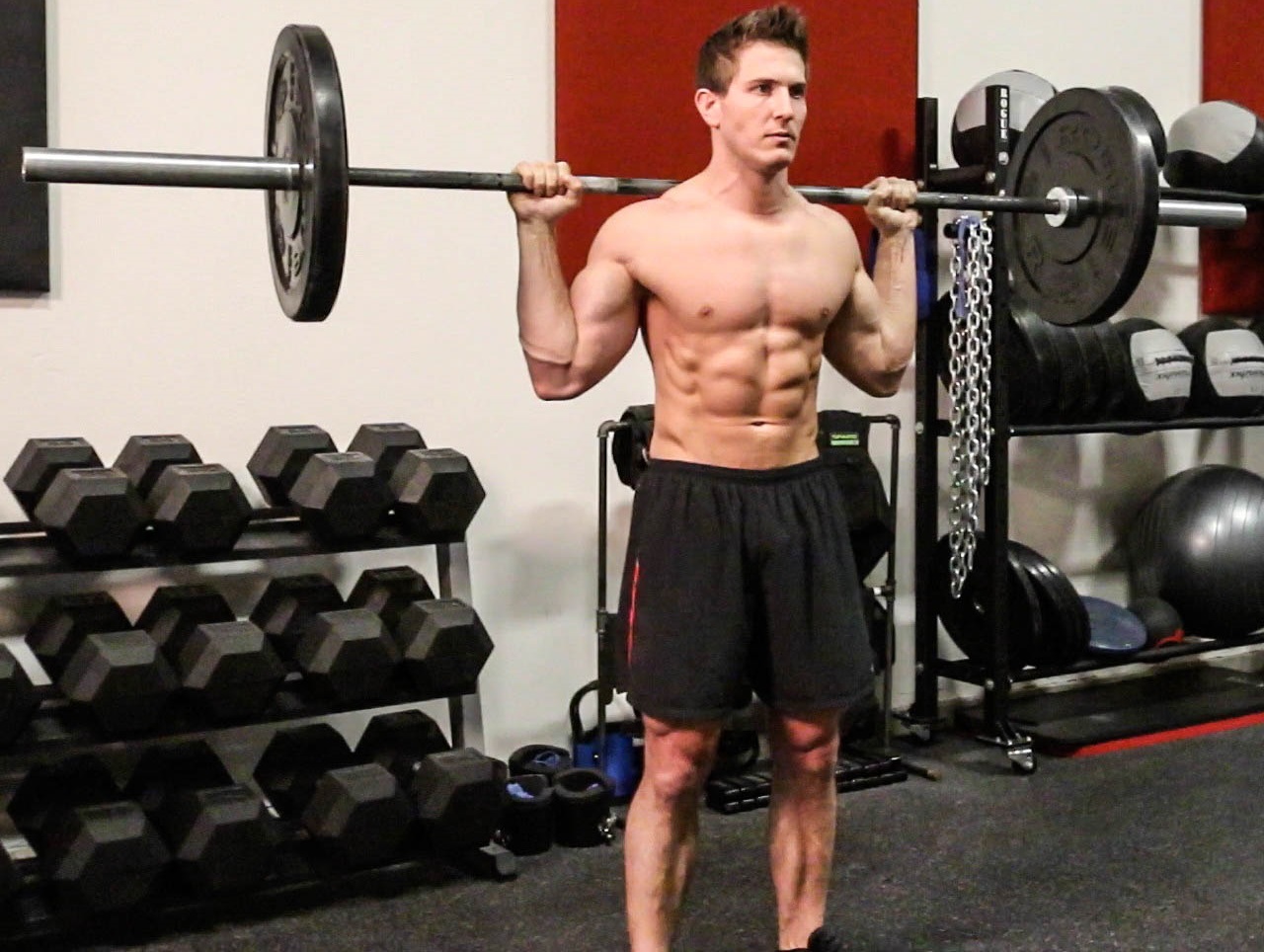
The barbell back squat focuses more on the hips, glutes and lumbar spine and places more of the load on the posterior half of your body. The main muscles involved are your glutes, quads, hamstrings, lower back and calves and you’ll activate your core for stabilizing purposes as well.
To perform the back squat you are going to get underneath the barbell and rest it across your shoulders, traps and upper back.
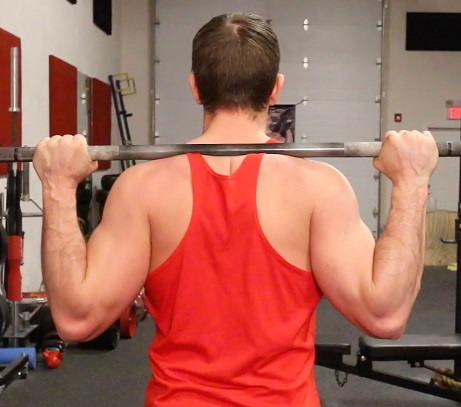
Now the set-up for a back squat is also much easier for when performing high rep sets because the barbell rests across your shoulders & traps. Once in place you are going to lift the barbell off the rack, step back, and stand with your feet about shoulder width apart. For the sake of this comparison I am going to be using the HIGH BAR version of the back squat. For actual muscle engagement the bar position doesn’t matter, but if you want to learn more about HIGH BAR VS. LOW BAR you can CLICK HERE.
You can also choose to have a wide stance or a close stance. Which stance you choose will come down to personal preference.

As soon as you are in your preferred stance you are going to sit back and lower yourself to the ground. Keep your chin up, chest up, and push your knees out as you descend. As soon as your body is fully descended you are going to push through your feet and drive the barbell back up to the starting position and repeat for reps.
Now another thing you need to keep in mind for when performing this movement is that you need to engage your core before descending by drawing in a breath and then holding it while flexing your core. This is how you stabilize your body so you don’t bend in half under the pressure of the barbell on your back and as you become stronger you will use this same technique when lifting heavier weights while wearing a weight belt.

For those of you who would like to learn more about how to properly use a weight belt you can find more information by CLICKING HERE.
Barbell Front Squat
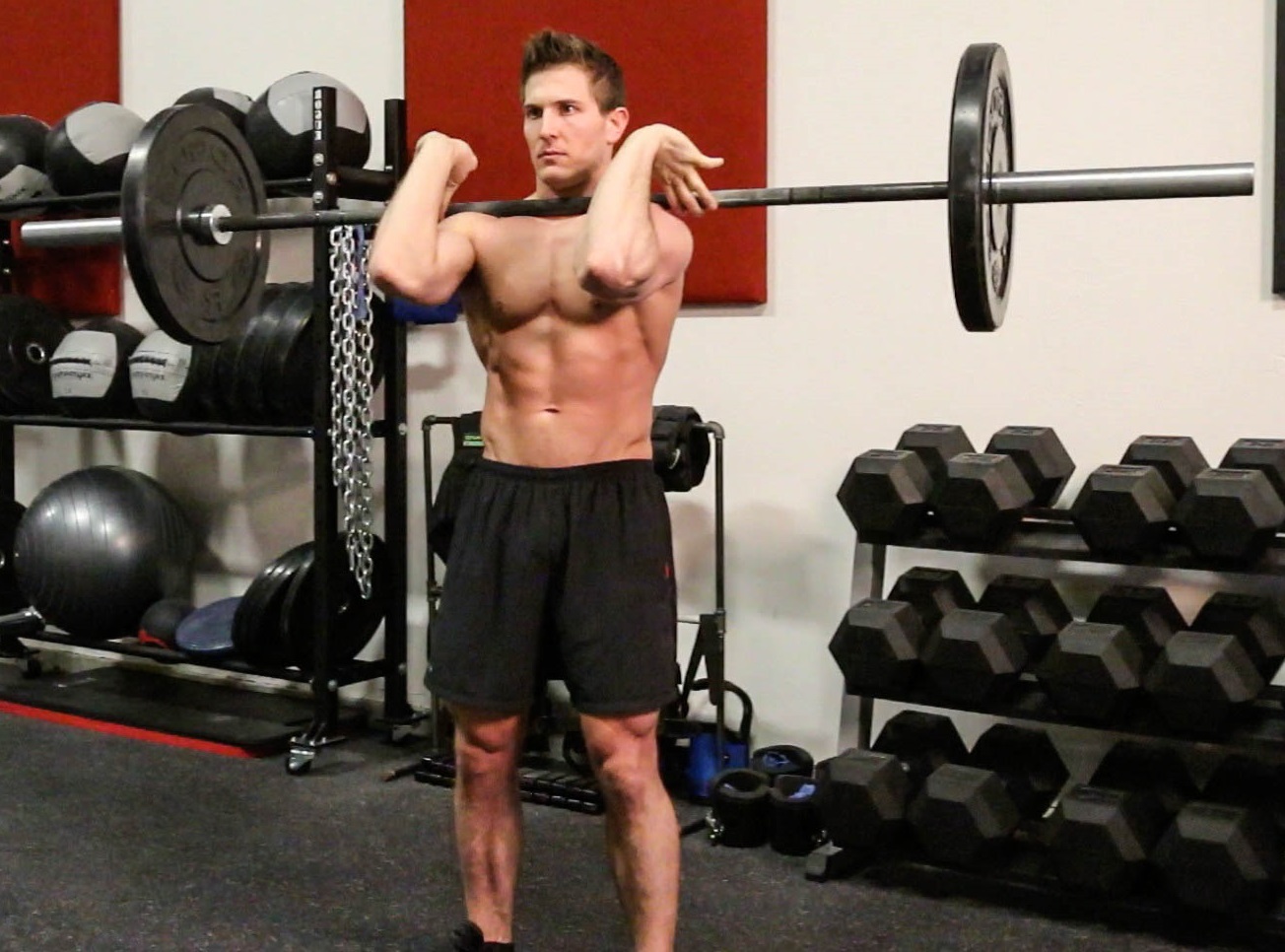
Now let’s take a look at the barbell front squat. This movement places more emphasis on the quadriceps and the upper back but the main difference is that because you are holding the barbell in front of your body, this exercise requires a more upright posture which will minimize flexion in the lumbar spine.
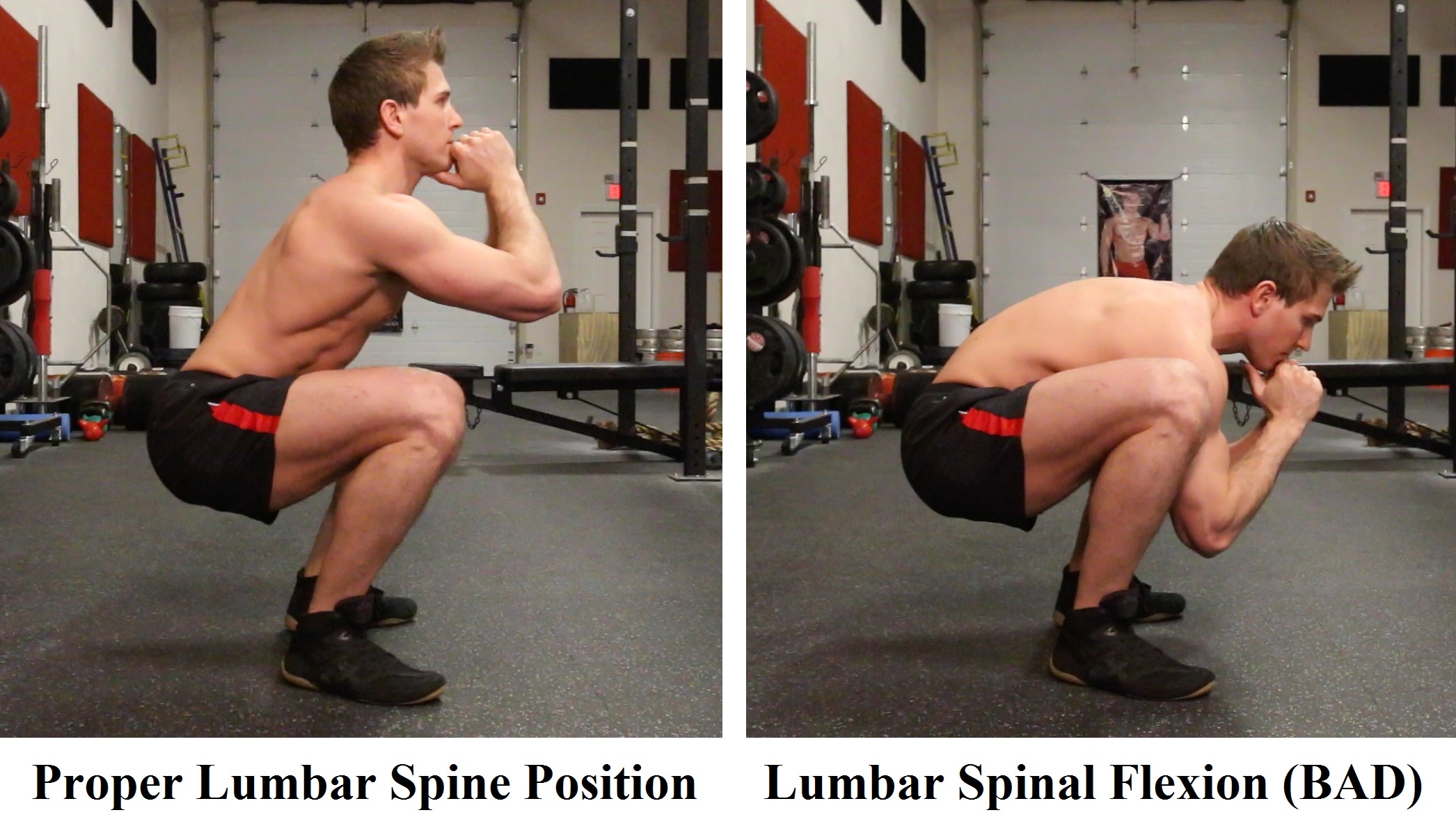
However, because of this you will need much more core stabilization throughout the movement to avoid spinal flexion, or rounding of your upper back.
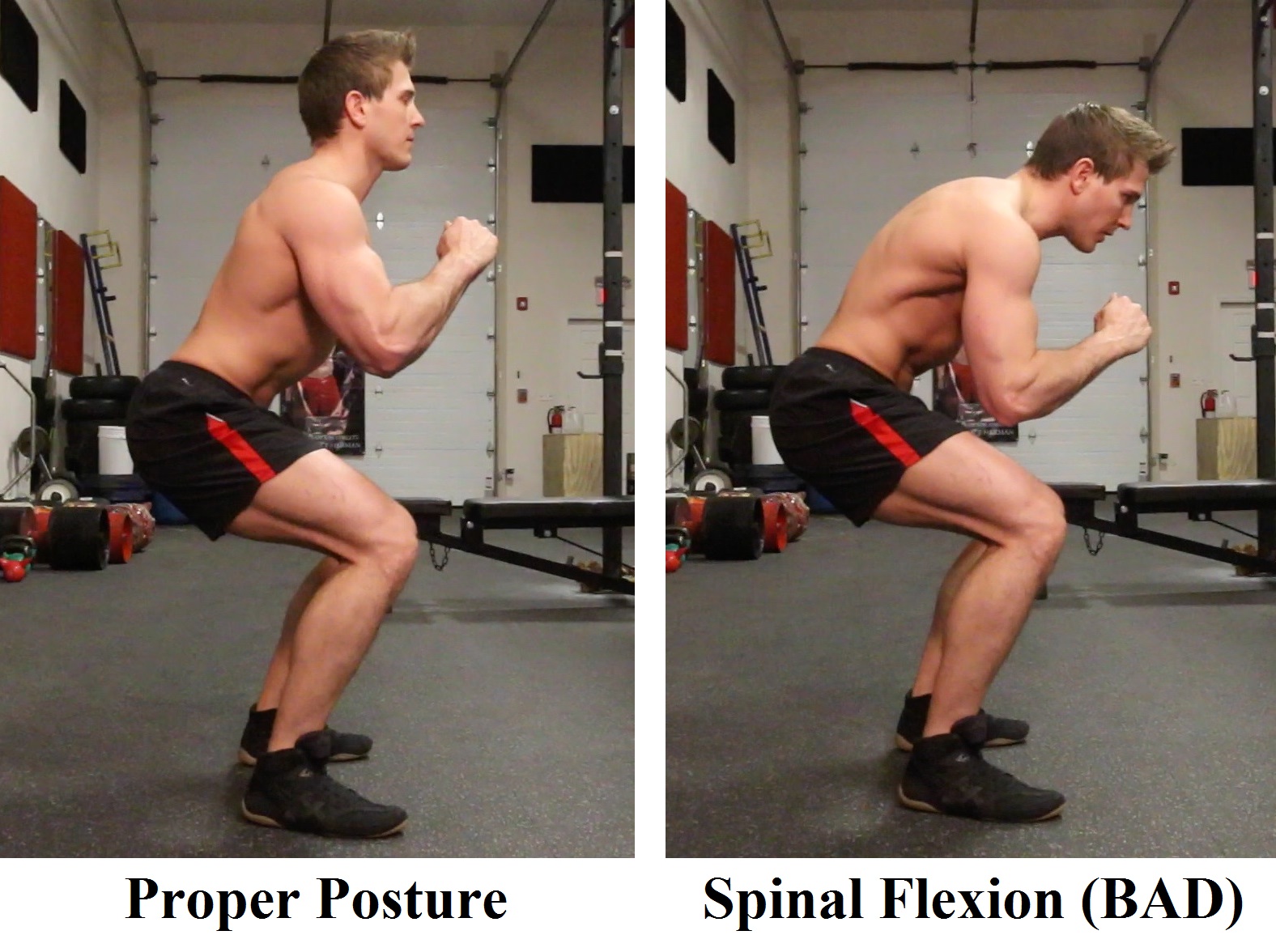
Now the reason why this movement places more emphasis on your quads is because there is more knee flexion. This is because the barbell is in front of your body resting across your anterior deltoids and clavicles thus pulling you forward as you descend which also takes a bit of the emphasis off your glutes and hips as well.

To perform the movement, approach the barbell and place your fingertips on it about shoulder width apart. Next, swing your arms under the barbell flexing your elbows until your upper arms are parallel to the floor.
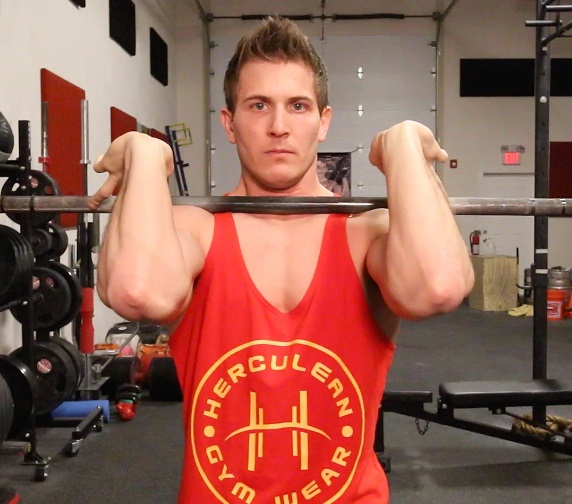
Once in place, unrack the barbell, step back and stand with your feet about shoulder width apart and your toes pointing forward. From here, draw in a breath and then lower your body to the floor. As soon as you are fully descended push through your feet to the starting position and repeat for reps.
The hand position I am using is known as the “clean grip”, but you can also choose to criss-cross your arms over the barbell so that your hands are resting on your shoulders if that is more comfortable. But mainly, the grip you choose will be determined by what you are training for. For example, if you are incorporating “Cleans & Snatches” into your weekly routine, you will want to front squat with the “clean grip” to build strength and carryover technique for the bottom or “catch” of the clean and snatch. If your routine doesn’t consist of a clean & snatch or overhead pressing movements from the “racked position”, then you should be fine with the cross-cross if that is more comfortable.
ADVANTAGES / DISADVANTAGES
Now to better understand which exercise is best for you in terms of building muscle and strength, let’s take a closer look at joint flexibility requirements, as well as shoulder, lumbar spine and knee safety and overall power and strength from each movement.
JOINT FLEXIBILITY
Front Squat: Front squats require more flexibility than back squats. This is because you need to have enough flexibility in your back to maintain the elbow flexion you need to keep your chest up during the movement. Your shoulders and wrists need to be flexible as well so that you can maintain your hand position on the barbell when using the “clean grip” form. When you descend you will also require more flexibility throughout your lower back and hips to allow you to fully descend and really take advantage of the knee flexion required to perform the movement and place more emphasis on your quads while keeping your knees in line with your toes. Lastly, you will need more ankle mobility to help you keep your feet flat and your lower back from rounding at the bottom of the movement as well.
Back Squat: Now don’t think that because front squats require a bit more flexibility that back squats are a walk in the park. Yes, you don’t need as much shoulder, wrists, hips and ankle flexibility, but nonetheless flexibility in these areas will be required in order to reach maximum depth on each rep. Also, most people don’t realize that you are still placing your shoulders under a tremendous amount of stress during a back squat because you have to reach back to hold the barbell, especially when using a low bar position. So what that means is that you will need a great deal of shoulder flexibility to comfortably perform a back squat when compared to a front squat. With that being said, let’s talk a bit more about shoulder safety with these two exercises.
SHOULDER SAFETY
Back Squat: When performing a back squat with a high or low bar position, this requires the shoulders to be externally rotated and abducted. Now if you have healthy shoulders and properly stretch and warm them up, chances are you won’t feel a thing. But if you have a history of shoulder injuries you may feel a lot of pressure while in this position making it harder for you to hold the barbell in place. In fact, often times this is what leads people to “fall forward” during a back squat because without realizing it, as they descend, they are pushing themselves forward due to the pressure in their shoulders.
Front Squats: As for Front squats, because you place the bar across your anterior deltoids and clavicles, if you have a pre-existing shoulder injury this position may feel a bit more comfortable. However if you suffer from an AC joint separation or shoulder impingement, this position may not be easy for you to maintain for an entire set of repetitions. Also, because the front squat puts your elbows in full flexion and your wrists in full extension if you have a preexisting injury in those areas you could reinjure or aggravate them while front squatting.
LUMBAR SPINE SAFETY
Now since we started with shoulders, let’s move down the body and talk about lumbar spine safety! This is more of a neutral area when it comes to the back and front squat. Both movements require you to maintain an upright position with your chest and a tight core as you descend to keep from going into lumbar spinal flexion. Although front squats require less forward leaning as you descend, if both exercises are done properly they are equally as safe for your lumbar spine.
KNEE SAFETY
As for knee safety, both the back and front squat can strengthen the knees to reduce the potential for a ligament or meniscus tear. One of the main muscles that helps stabilize the knee is the vastus medialis oblique which is your inner quadriceps and makes up the “tear drop”. When compared to each other, the front squat actually targets this muscle better than back squats. Another great thing about front squats is that because the form almost forces you to push your knees out, you can prevent valgus knee collapse which is also known as (knee-knock) or when your knees collapse IN during the movement.
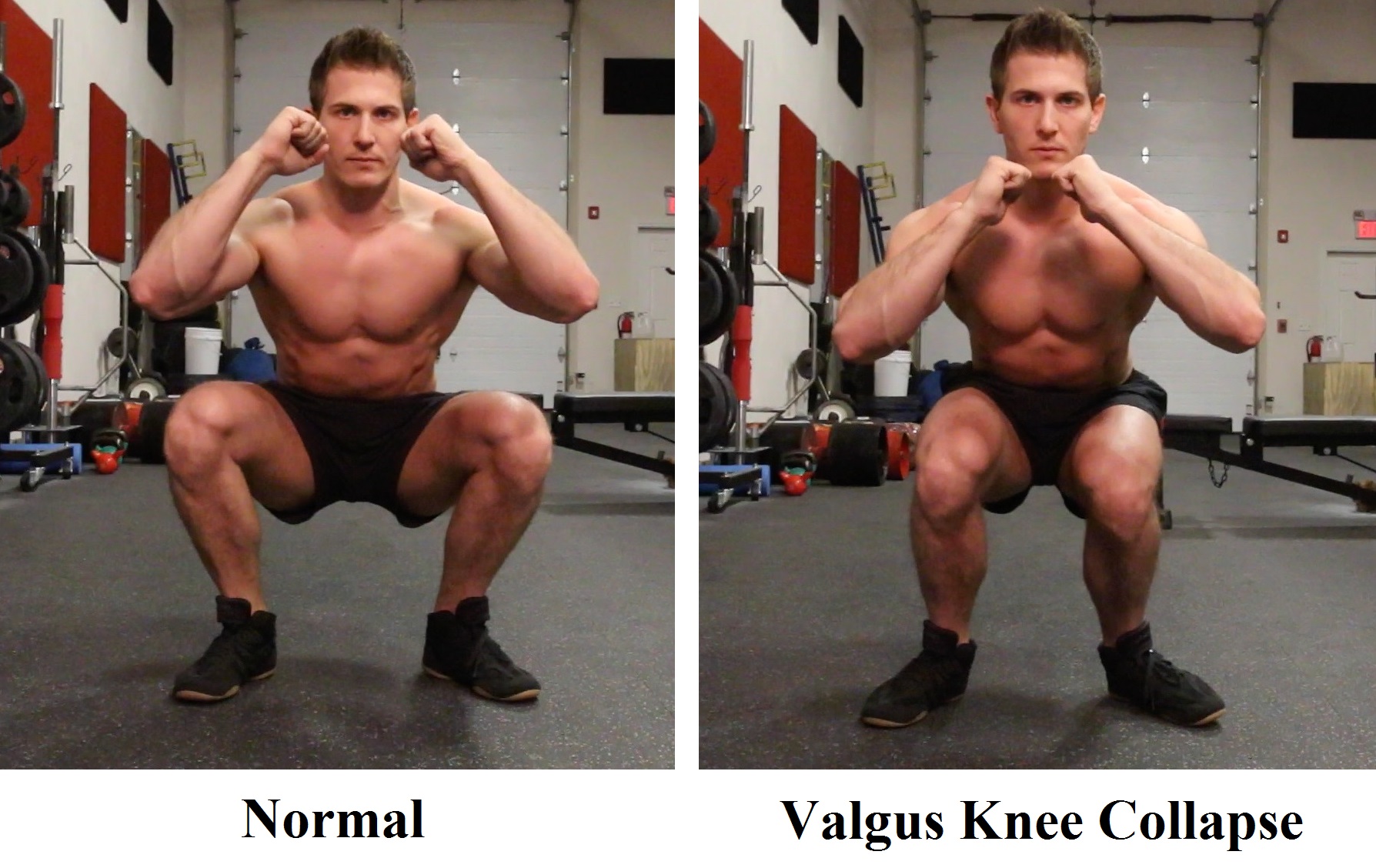
But also keep in mind that if you squat with a wider stance, which will place more of the weight on your glutes and adductors, you can lessen the chances of valgus knee collapse during the movement. Now, I want you guys to REALLY take this to heart when you train because valgus knee collapse is a common cause of an ACL tear and I see people all the time in the gym letting their legs fold in while they squat and the last thing I want for YOU is a serious injury.
THE FINAL COMPARISON
So which exercise should you be using in your weekly routine? Let’s do one final recap before making a decision.
KNEE SAFETY
Since we just covered knee safety let’s start there. Like we just talked about, front squats place a bit more emphasis on the vastus medialis oblique which is one of the main muscles that helps stabilize your knee. Also, because front squats force you to push your knees out you can easily avoid knee knock which can lead to a possible ACL tear. However, we can also avoid knee-knock by back squatting with a wider stance. Now, if you currently have any knee issues, because back squats place more of the load on your hips than your knees by having the barbell on your back, this will allow you to sit back more during the movement avoiding excessive knee flexion when compared to the front squat. So my conclusion when it comes to knee safety is a tie.
SHOULDER SAFETY
Now let’s talk about shoulder safety. If you’re an athlete that performs a lot of overhead movements like a basketball player for example, chances are that you’re already dealing with some sort of shoulder injury already that you don’t need to make worse. With that being said, front squats can help you avoid additional shoulder pain due to the “clean-grip” or “cross-grip” position with your arms to perform the movement. As we discussed earlier, you may have to keep your shoulders in an uncomfortable position during a back squat to hold the barbell in place causing a lot of pressure to the muscles in that area during the movement. So if you are an overhead athlete, front squats would a better choice for your goals.
OVERALL STRENGTH & HIP EXTENSION
But what if you are not an overhead athlete and you are looking for overall strength and hip explosive power? If that is the case, the clear choice would be back squats. This is due to a few reasons. Number one, back squats build a tremendous amount of strength in the muscles that extend your hips such as your glutes and hamstrings. These are the muscles that are going to provide you with the explosive power you need for sprinting and jumping. Number two, you are going to be limited by the amount of weight you can hold on the front of your shoulders during a front squat. Obviously if you are looking to increase your maximum strength, you are going to need to train with the back squat because you are always going to be able to train with more weight and with more weight comes more strength gains!
CARRYOVER MOVEMENTS
The last comparison I want to make is which exercise will better pre-pare you for carryover movements like cleans & snatches and that exercise is the front squat. The front squat mimics the movement pattern from the bottom position after catching a clean or snatch. So even though you can lift more weight from the bottom position of a back squat, that strength won’t necessary carryover to a clean or snatch for the obvious reason of that the bar is placed in a totally different position.
WHICH EXERCISE SHOULD YOU CHOOSE?
So which exercise should you choose to build more muscle and strength? Well, at the end of the day it is going to come down to your overall training goal, joint flexibility, past or current injuries and if you are an overhead athlete. In general, there should be no reason why both movements are not included in your weekly routine due to the fact that back squats place more emphasis on your glutes and hamstrings and front squats place more emphasis on your quads.
A lot of people think that just because they can squat more weight with a back squat that this makes it automatically better. Well the truth is that you will always be able to squat more with a back squat because of the placement of the bar on your back. This combined with your hand position will allow you to transfer more force to driving the bar up from the bottom position. A good rule of thumb for a balanced lifter is that they should be able to front squat around 70 – 85% of their back squat. For example, if you back squat 100lbs for 10 reps, you should be able to front squat 70 to 85lbs for 10 reps.
HOWEVER, if you live your life by HALF REPS, this will not hold true for you so if you are a half rep squatter you need to fix your form.
With that being said, because front squats require the barbell to be held across your shoulders it makes it impossible to learn forward and cause lumbar spinal flexion. Thus, front squats will improve your back squat technique by teaching you to keep your torso more erect during the movement.
So the real conclusion, both exercises engage all of the same muscles with a slight variation of which muscles have a bit more emphasis placed on them to complete the movement. Both squats will build muscle and make you stronger. But obviously if you are a powerlifter, back squats would be more beneficial for you to have a higher total score during a meet and if you are an Olympic Lifter, front squats will carry over into helping you have a stronger clean & snatch. But if you are a bodybuilder you will want the benefits of both exercises because your goal is to build a muscular and aesthetic physique. For example if you want to focus more on growing your glutes and hamstrings you will train with back squats, but if your quads need a bit more attention you will want to focus more on front squats. But whatever the case make be, always make sure you are pushing your limits and training with proper form!









